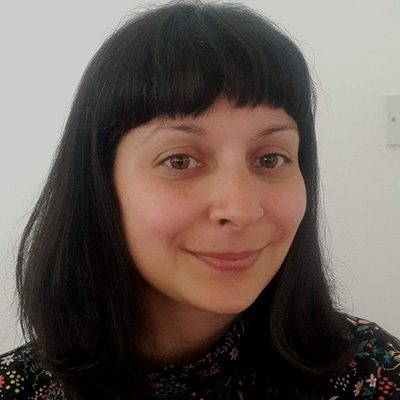Frome Museum AHRC project
Co-producing access awareness in the cultural heritage sector for people with learning disabilities.
This project, led by disability activists and researchers at We Are The People, was made possible by BSU receiving an AHRC Impact Accelerator Award.
The aim of our project was to raise awareness of the access needs of people with learning disabilities in heritage spaces, such as museums.
The project brought together a range of partners including Open Story Tellers, who are a creative arts group based in Frome for people with learning disabilities, volunteers from Frome Museum, and Bath Spa University staff.
Our work so far has investigated how everyone can engage with a museum, this has focused on displays, information, ‘hands-on’ activities, and sensory experiences.
In the 'Resources' section on this page you can download the Top Tips as a flyer or poster, complete with illustrations by Open Story Tellers member Robin Meader. You can also find the top tips available as a video. Alternatively, you can read the rationale behind each of the tips below.
Top Tips
The following Top Tips have been developed to help with making local and small museums more accessible and inclusive.
They are the result of a culmination of five creative workshops with museum volunteers and members of Open Story Tellers, and training which Bath Spa University researchers delivered about the Social and Medical models of disability.
Give a warm welcome.
Don’t be afraid to approach people. This can help visitors feel comfortable and can lead to conversations about how they can best be supported.
We developed these ‘Top Tips’ as we have found partners, museum volunteers and people with learning disabilities and their friends/families expressed a nervousness around visiting museums with people with learning disabilities.
For museum and heritage staff there is often a fear of saying or doing the wrong thing around disabled people. For the carers and support workers, they may be unsure on what items they are able to touch in a display. These tensions often result in people doing nothing (not visiting a museum or saying hello), or even sometimes overcompensating by giving an over the top and uncomfortable amount of attention to the person with a learning disability.
In our group discussions, we talked about things like having simple things like simply just saying ‘hello’ and ‘welcome’ to all visitors, having signs saying it is okay to stim here. or even having a recognisable accreditation for supporting people in museums and heritage sites.
Provide pre-visit information.
People sometimes look for information about accessibility before they plan their trip (e.g. disabled parking and toilets). Make sure your accessibility information is up to date.
This one can make or break people's decisions about whether to visit a museum or heritage site or not. Many small or local museums don’t have things like ramps or accessible toilets, and these are things that can’t always be easily changed, particularly if the museums are older buildings or don’t have big budgets.
So, by being upfront about this information on a website or social media channel, it puts the decision making in the hands of the disabled person. Signposting people to the closest accessible toilets or disabled parking can really help.
Create interactive experiences.
This doesn’t have to be messy or expensive. Examples might be a simple ‘can you spot’ trail, a themed arts and crafts corner, or letting visitors dress-up in period clothes.
Following our consultations with families and organisations for people with learning disabilities, we found that having something ‘hands-on’ or crafty to do came up tops. These were particularly popular choices for people who were non-verbal or with lower levels of literacy skills.
Family audiences with non-disabled children also expressed a preference for arts and craft activities. So, by becoming more accessible for one audience, museums and heritage sites can also attracting other groups of people.
Become a multi-sensory museum.
Cater for all senses, such as smell, touch, and sound. Consider introducing smelling cubes, tactile fabrics, and sound effects.
Many people access the world in different ways. This can be because of a disability, a health condition, neurodivergence, or simply because we all have different learning styles.
Some people may prefer to read about an object to learn about it, whereas others might need to feel it, hear it, smell it, move it or even really look closely at it!
Offer choice.
Share information in different formats. For example, audio and video descriptions, and shorter and longer texts, if you possibly can.
We found everyone interacts differently in museums, and there was no wrong or right way to process information or engage with museum displays. Some people preferred shorter texts with images and maps to consolidate learning, whereas others wanted to dive in a bit deeper into all of the nitty gritty details and information of an object or display.
What matters is having information portrayed in a variety of different ways. This means that people can have ownership of their visit, this might be learning and finding out about object through videos, audio descriptions, matching images to objects and texts or simply reading longer text descriptions.
Provide items to handle.
People can learn about objects from their weight and texture. We used a green hand symbol with a tick to signify it’s okay to touch.
We understand the importance of appealing to different learning styles. We know that different people learn in different ways, some through listening, doing, seeing or reading. For instance, to touch a museum object and feel its texture or to re-enact its use, can be valuable learning experience to many.
Lots of people find it hard to know when they can and can’t touch in a museum. They can be tricky environments to be in. We found a simple green card with a hand symbol and a tick to denote that you can touch felt much more positive than red crosses or lots of ‘do not touch’ signs, which can feel quite negative and authoritative. Consistent and colour-coded signage also helped the participants we worked with. But too many signs can be a bit overwhelming.
Create accessible signs and displays.
People can make sense of exhibits when information is in a consistent font that is large and colour coded, alongside pictures of individual objects in context.
We prefer to use just one font throughout our resources and choosing a larger font size such as at least 14. Our project showed that a simple font, without too many curls or elongation, was the simplest to read.
Share history and build relationships with your community.
Local people are experts in their history. Invite them to the museum to share their stories. Be prepared to capture this and listen.
Smaller museums can be rich with knowledge, social histories and stories belonging to local people. We found that although museums represented many historical communities, newer or diverse communities' voices (including those with learning disabilities) were not represented in the collections and displays. When these communities feel represented, they feel welcomed into these spaces.
Resources
Our illustrated Accessible and Inclusive Museum Practice Guide for Small and Local Museums is available to download as a poster or flyer. You can also watch the top tips as a video.

.jpg)



